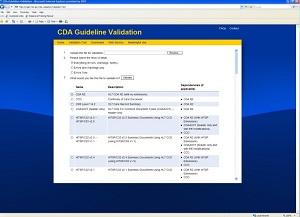Clinical Data Exchange
HIT: Clinical Data Exchange
Overview

Electronic Health Records (EHRs) are set to replace paper records in medical facilities. While Stage One of Meaningful Use focused on summary documents, such records are only the tip of the iceberg when it comes to the number and variety of document types. Laboratory results, emergency department notes, immunization history records, antepartum records and quality reporting are just some of the variety of electronic records that are coming online. Industry has provided guidance in the form of general standards, profiles and guidelines; a way of determining conformance to these specifications is needed in order to increase the likelihood of robust interoperability.
Industry Need Addressed
In order for interoperability to occur, conformance to industry specifications must take place. While newer and more far-reaching specifications have been created, tooling for testing and for teaching has lagged behind.
NIST/ITL Approach
NIST continues to collaborate with specification authors and industry implementers. Such collaboration takes place in the form of tool development and in the form of feedback to the committees charged with the creation of specifications. The process of tool creation/maintenance and generation of sample instances allows the committees to refine their specifications to improve future versions.
The tools used by implementers allows them to see where they diverge from the specifications. Industry uses NIST tooling and example files to create and improve health care software applications.
The development of our tooling (and its use by vendors) will also uncover bugs, inconsistencies, and other problems with the underlying specifications themselves. These discoveries can be taken back to the committees/authors and be used to correct the specification documents. This brings us closer to the goal of interoperability, by the iterative process of improvement, because the specifications are more correct, clearer, and therefore easier to conform to.
Impact
The NIST developed tooling has led to tighter specifications and is used by industry vendors to create software applications that more closely align with the industry standards, profiles, and implementation guides.

